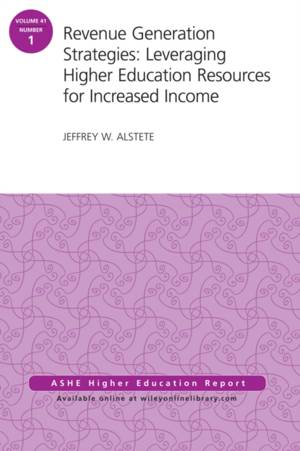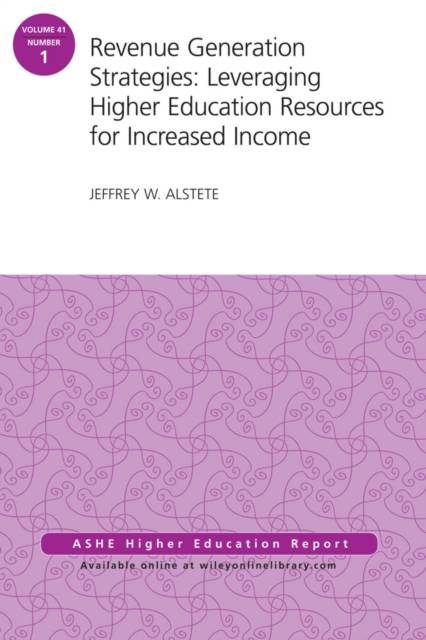
- Retrait gratuit dans votre magasin Club
- 7.000.000 titres dans notre catalogue
- Payer en toute sécurité
- Toujours un magasin près de chez vous
- Retrait gratuit dans votre magasin Club
- 7.000.0000 titres dans notre catalogue
- Payer en toute sécurité
- Toujours un magasin près de chez vous
Revenue Generation Strategies: Leveraging Higher Education Resources for Increased Income
Aehe Volume 41, Number 1
Jeffrey W Alstete
30,95 €
+ 61 points
Description
Achieving successful financial viability by broadening revenue sources is one of the most important issues facing colleges and universities today.
Increasing operating costs, along with the reliance on traditional student tuition, government support, and philanthropy, are challenging universities. One way administration leaders and faculty are meeting this challenge is to establish supplemental revenue streams from a variety other sources such as:
This monograph examines a wide variety of supplemental income options and opportunities, as well as examples of restructuring financial planning schema. While not negating the value of traditional college education, these new revenue sources in fact lead to greater institutional effectiveness.
This is the 1st issue of the 41th volume of the Jossey-Bass series ASHE Higher Education Report. Each monograph is the definitive analysis of a tough higher education issue, based on thorough research of pertinent literature and institutional experiences. Topics are identified by a national survey. Noted practitioners and scholars are then commissioned to write the reports, with experts providing critical reviews of each manuscript before publication.
Increasing operating costs, along with the reliance on traditional student tuition, government support, and philanthropy, are challenging universities. One way administration leaders and faculty are meeting this challenge is to establish supplemental revenue streams from a variety other sources such as:
- continuing education,
- credit and noncredit certificates,
- degree completion and upgrade programs,
- study abroad,
- domestic and international branch campuses,
- distance education,
- auxiliary services,
- technology transfer, and
- partnerships or alliances with other organizations.
This monograph examines a wide variety of supplemental income options and opportunities, as well as examples of restructuring financial planning schema. While not negating the value of traditional college education, these new revenue sources in fact lead to greater institutional effectiveness.
This is the 1st issue of the 41th volume of the Jossey-Bass series ASHE Higher Education Report. Each monograph is the definitive analysis of a tough higher education issue, based on thorough research of pertinent literature and institutional experiences. Topics are identified by a national survey. Noted practitioners and scholars are then commissioned to write the reports, with experts providing critical reviews of each manuscript before publication.
Spécifications
Parties prenantes
- Auteur(s) :
- Editeur:
Contenu
- Nombre de pages :
- 152
- Langue:
- Anglais
- Collection :
Caractéristiques
- EAN:
- 9781119049067
- Date de parution :
- 31-12-14
- Format:
- Livre broché
- Format numérique:
- Trade paperback (VS)
- Dimensions :
- 147 mm x 226 mm
- Poids :
- 204 g

Les avis
Nous publions uniquement les avis qui respectent les conditions requises. Consultez nos conditions pour les avis.






